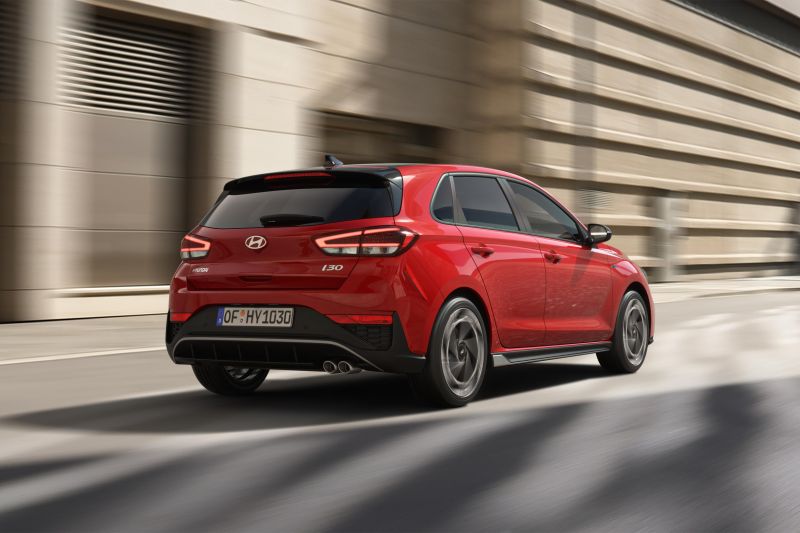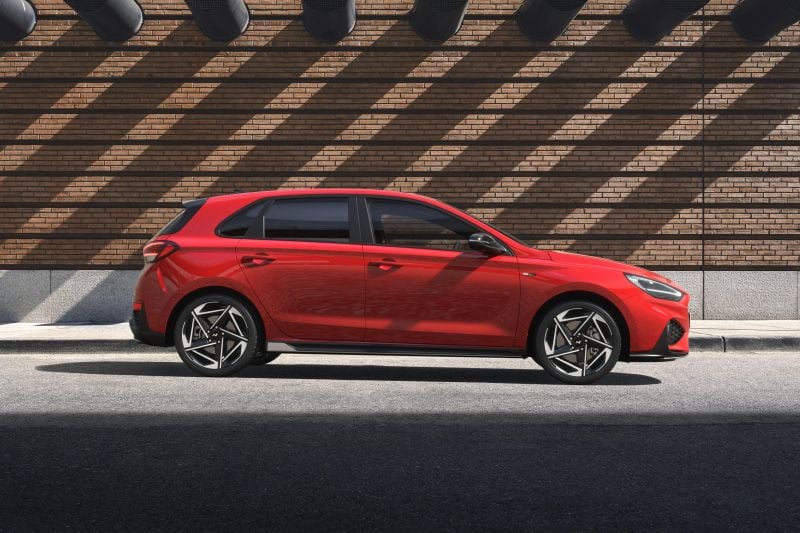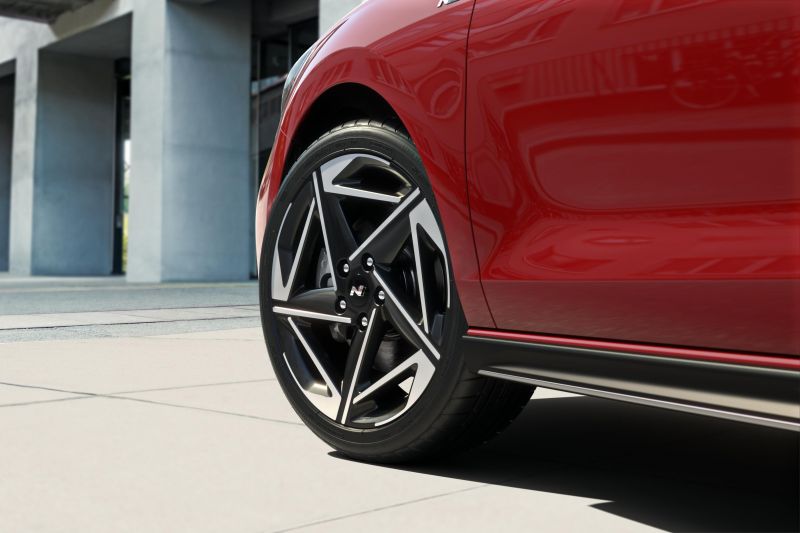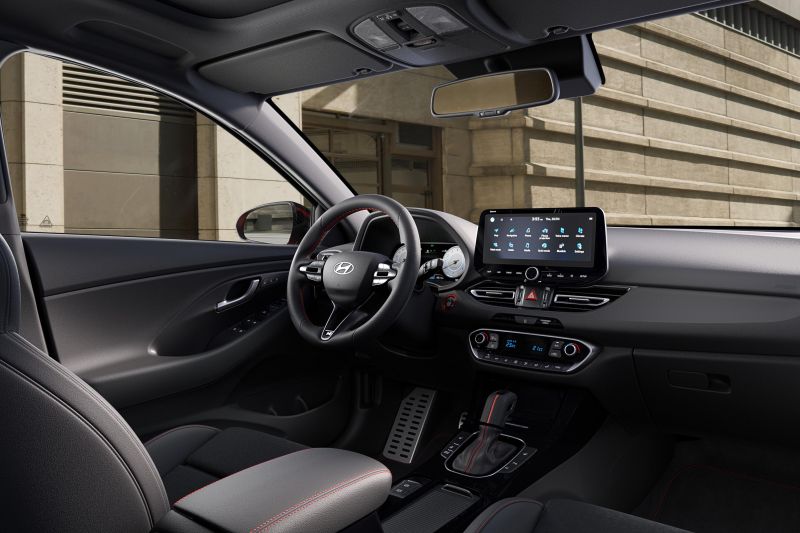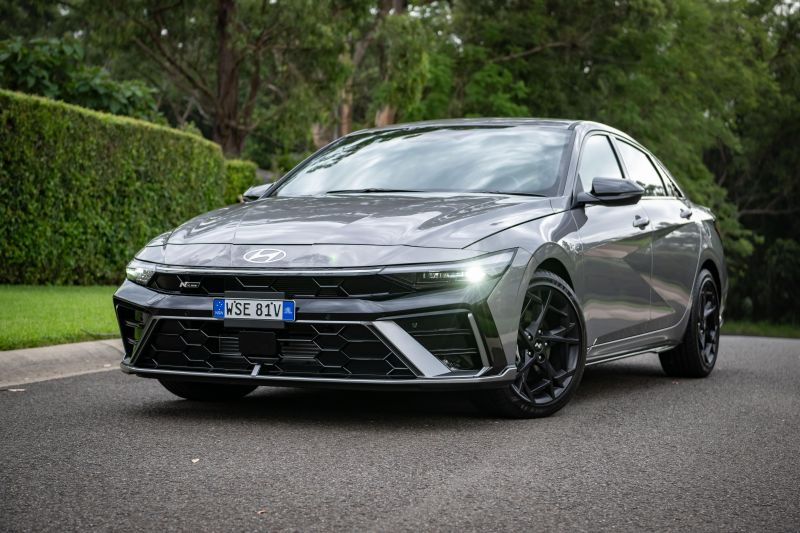Hyundai’s refreshed i30 Hatch has been approved for sale in Australia, but a higher base price is looking likely for the pared-back range.
Government approval documents show the updated i30 Hatch, which will now be sourced from Czechia instead of Korea, will be offered exclusively in N Line guise.
The previous base, Active and Elite trim levels have been axed without replacement.
That and the five per cent import tariff levied on European vehicles should see the base price rise significantly from the $24,000 before on-roads sticker on the defunct i30 Hatch manual which previously opened the range.
The updated i30 Hatch is due in Australia in September, around the same time as a mildly updated version of the hot i30 N Hatch.
Approval documents show the new Czech-sourced hatches will use a turbocharged Kappa 1.5-litre four-cylinder engine with a 48V mild-hybrid system, mated with either a six-speed manual or seven-speed dual-clutch automatic transmission.
However, CarExpert understands that while the manual has been approved for sale in Australia, the updated N Line will be offered here exclusively with the dual-clutch auto.
That means buyers will need to step up to performance i30 N models for a three-pedal option.
We also appear set to miss out on the turbocharged 1.0-litre three-cylinder engine that opens the i30 range in Europe.
The new N Line models will ride on 18-inch alloy wheels in Michelin Pilot Sport 4 tyres.
Approval documents list a power output of 117kW for the new (to Australia) engine, but no torque output or fuel economy figure.
That means the new 1.5T powertrain will out-punch the naturally aspirated 2.0-litre four, but fall short of the outgoing turbocharged 1.6-litre N Line models.
Below, we’ve compared specifications from the European-market i30 with the outgoing Australian-market 2.0-litre and turbo 1.6-litre options.
| New 1.5T | 2.0-litre | 1.6T | |
|---|---|---|---|
| Engine | 1.5-litre turbo four | 2.0-litre atmo four | 1.6-litre turbo four |
| Power | 117kW at 5500rpm | 120kW at 6200rpm | 150kW at 6000rpm |
| Torque | 253Nm at 1500-3500rpm | 203Nm at 4700rpm | 265Nm at 1500rpm |
| Transmission | Seven-speed dual-clutch auto | Six-speed auto | Six-speed manual Seven-speed dual-clutch auto |
| Combined fuel economy | 6.1L/100km (WLTP) | 7.3-7.4L/100km | 7.1-7.5L/100km |
Hyundai claims a 0-100km/h time of 8.6 seconds with the manual and 8.8 seconds with the auto.
The i30 Hatch can’t run on electric power alone like a Toyota Corolla Hybrid, though the mild-hybrid system can provide a power boost and smooth out the operation of the automatic stop/start.
As with the defunct 1.6-litre N Line models, the European-sourced N Lines feature standard multi-link rear suspension.
In addition to a new engine and a new country of origin, the recently updated i30 Hatch features revised styling front and rear with standard LED headlights and tail lights.
With the last i30 Hatch facelift, which debuted here late in 2020, only non-N Line hatch models got freshened styling, with the Australian-market N Line left to soldier on with the old look. That means Australian N Line hatches will finally catch up with European-market models.
Inside, there’s also been a switch to LED interior lighting, which can also be found in the boot.
In Europe, there’s a choice between a standard 4.2-inch colour instrument cluster screen or an optional 10.25-inch fully digital cluster.
There are now over-the-air updates available for the satellite navigation, while there are three USB-C outlets in the cabin.
Hyundai has applied a new paint to the dash to make it “more pleasant and smoother to the touch”, while the centre console is now finished in gloss black trim. There are also three new seat patterns.
New additions to the safety suite include intelligent speed limit assist and a rear occupant alert, while the autonomous emergency braking system is now available with a junction assist function in addition to vehicle and pedestrian detection.
Optional is Highway Driving Assist 1.5, which combines adaptive cruise control and lane centring functions and can adjust the vehicle’s speed according to the posted limit. According to government approval documents, this option will be offered here.
The higher price point of the refreshed hatch range will likely leave the Korean-sourced i30 Sedan to pick up the slack in attracting more price-conscious buyers.
The i30 Sedan, which uses newer underpinnings than the hatch and is known elsewhere as the Elantra or Avante, currently opens at $29,000 before on-roads.
However, CarExpert understands the hatchback has previously accounted for around 80 per cent of i30 sales, such is the traditionally greater popularity of hatchbacks in this segment.
It’s unclear how many would-be i30 Hatch buyers will consider the i30 Sedan now that the five-door is losing its most affordable variants.
Those also missing the extra grunt of the old N Line hatch will need to step over to the i30 Sedan N Line, which will retain the more powerful turbo 1.6-litre. It’s priced from $36,000 before on-roads.
MORE: Everything Hyundai i30





